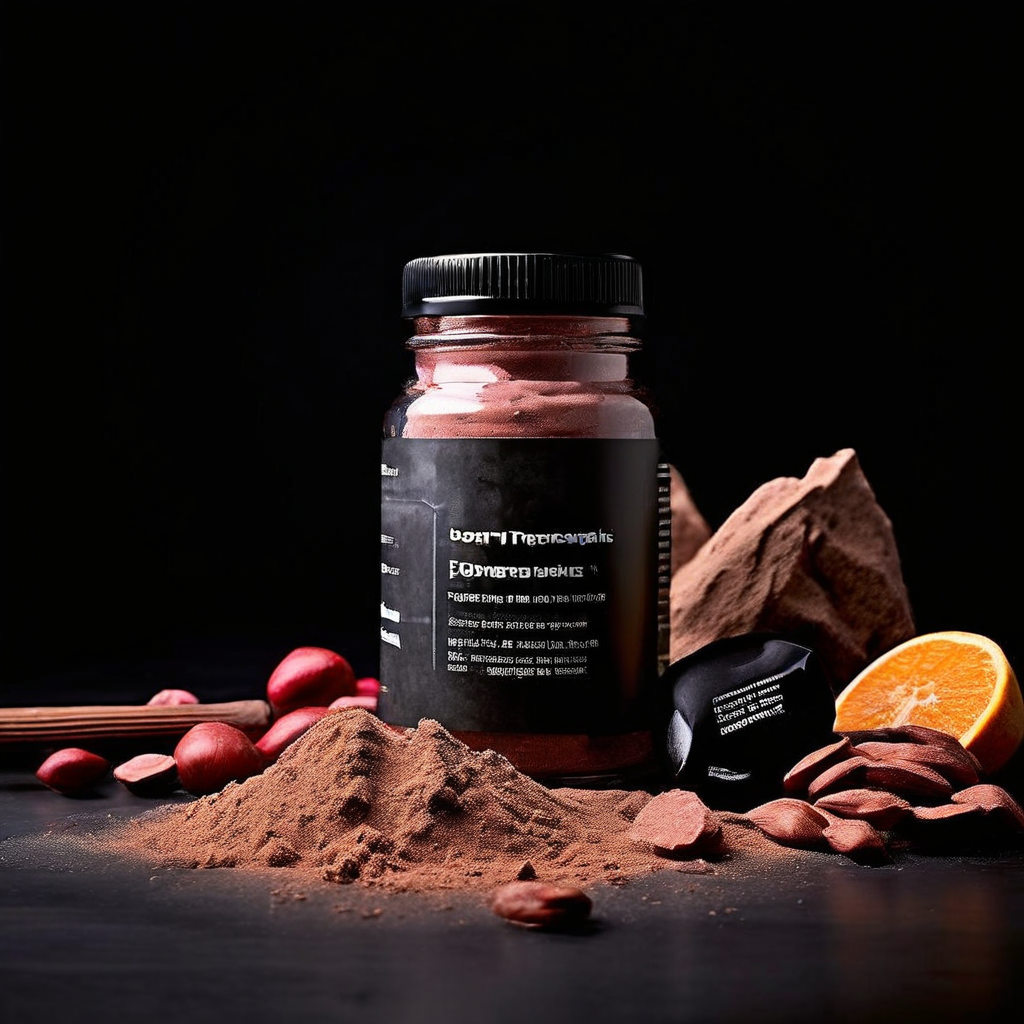Berberine, a compound from the Berberis shrub, offers numerous health benefits. It has been used in traditional medicine for centuries and modern research supports its effectiveness in treating various chronic conditions.
Berberine’s mechanisms include activating AMPK, modulating gut microbiota, and inhibiting mitochondrial respiratory elaborate I. These actions contribute to its potential in managing diabetes, cardiovascular diseases, and metabolic disorders.
Introduction to Berberine
Berberine is a bioactive compound extracted from several plants, including the Berberis shrub. It has been a staple in traditional Chinese medicine (TCM) and Ayurvedic medicine for thousands of years. Primarily used to treat gastrointestinal infections and other ailments, modern scientific research has expanded our understanding of berberine. It reveals potential benefits for various chronic conditions such as diabetes, cardiovascular diseases, and metabolic disorders.
Pharmacokinetics and Bioavailability
Berberine’s pharmacokinetics involve its absorption, distribution, metabolism, and excretion (ADME) properties. After oral administration, berberine is widely distributed in multiple tissues and organs. However, its bioavailability is relatively low due to first-pass metabolism in the intestinal lumen. Advanced techniques like high-performance liquid chromatography electrospray ionization mass spectrometry (HPLC–ESIMS) have been employed to study its tissue distribution. These studies reveal that berberine can accumulate in plasma despite low concentrations, in accordance with a study.
Metabolism
Berberine undergoes extensive metabolism in the liver, where it is converted into several active metabolites. These metabolites contribute to its pharmacological effects, including its ability to lower blood glucose levels and improve lipid profiles. The strategic use of nanotechnology, such as nanocarriers and liposomes, has been proposed to enhance the bioavailability of berberine (Frontiers in Pharmacology).
Mechanisms of Action
One of the primary mechanisms by which berberine exerts its effects is through the activation of AMP-activated protein kinase (AMPK). AMPK is an enzyme that plays a crucial role in regulating cellular energy homeostasis. Activation of AMPK leads to increased glucose uptake, improved insulin sensitivity, and enhanced fatty acid oxidation. Studies have shown that berberine activates AMPK in various tissues, including the liver, muscle, and adipose tissue.
Modulation of Gut Microbiota
Berberine also affects the gut microbiota, which plays a significant role in metabolic health. It has been shown to alter the composition and function of gut bacteria, leading to improved bile acid metabolism and reduced inflammation. For instance, a study demonstrated that berberine modulates gut microbial function through the regulation of bile acids, which in turn activates the intestinal farnesoid X receptor (FXR) (BMC Microbiology).
Inhibition of Mitochondrial Respiratory Complex I
Berberine and its derivative, dihydroberberine, have been found to inhibit mitochondrial respiratory elaborate I. This inhibition leads to the activation of AMPK and subsequent improvements in insulin action. This mechanism is particularly relevant for the treatment of type 2 diabetes and metabolic syndrome (Diabetes).
Anti-Inflammatory and Antioxidant Effects
Berberine exhibits significant anti-inflammatory and antioxidant properties. It inhibits the production of pro-inflammatory cytokines and reduces oxidative stress, which are critical factors in the pathogenesis of chronic diseases such as cardiovascular disorders and cancer. These effects are mediated through various signaling pathways, including the nuclear factor-kappa B (NF-κB) pathway.
Modulation of Lipid Metabolism
Berberine has been shown to improve lipid profiles by reducing total cholesterol, low-density lipoprotein (LDL) cholesterol, and triglycerides. It achieves this by upregulating the expression of LDL receptors and enhancing the excretion of cholesterol from the liver to the bile. Additionally, berberine inhibits the synthesis of lipids in the liver, contributing to its lipid-lowering effects (Nature Medicine).
Clinical Applications
Numerous studies have demonstrated the efficacy of berberine in managing type 2 diabetes. It significantly lowers fasting blood glucose levels, hemoglobin A1c (HbA1c), and improves insulin sensitivity. In a 2008 study involving 116 diabetic patients, berberine was found to lower fasting blood sugar by 20% and HbA1c by 12%. Another review of 14 studies concluded that berberine is as effective as certain oral diabetes drugs, including metformin and glipizide.
Cardiovascular Health
Berberine’s cardiovascular benefits include improved heart function, reduced arrhythmias, and enhanced exercise capacity. It also exhibits potential in treating heart failure and other cardiovascular conditions by modulating lipid metabolism and reducing inflammation (World Journal of Cardiology).
Weight Loss and Metabolic Syndrome
Although research on berberine’s effects on weight loss is still limited, some studies suggest that it may help reduce body weight and improve metabolic health. Berberine’s ability to activate AMPK and modulate gut microbiota contributes to its potential in treating obesity and metabolic syndrome (Cleveland Clinic).
Antimicrobial and Anticancer Properties
Berberine has demonstrated antimicrobial activity against various pathogens, including bacteria, fungi, and viruses. It is particularly effective against gastrointestinal infections and has been used traditionally to treat diarrhea. Additionally, berberine exhibits anticancer properties by inhibiting the proliferation of cancer cells and inducing apoptosis.
Safety and Side Effects
The most common side effects of berberine are gastrointestinal in nature, including nausea, constipation, diarrhea, and stomach pain. These side effects are generally mild and tend to diminish as the body adjusts to the supplement (Mayo Clinic).
Drug Interactions
Berberine can interact with a wide range of medications, including anti-clotting drugs, sedatives, and diabetes medications like metformin. It is crucial to consult a healthcare provider before starting berberine, especially for individuals on multiple medications.
Long-Term Use
While berberine is generally considered safe, long-term use may impact liver function. Monitoring liver enzyme levels is recommended for individuals using berberine for extended periods. Pregnant and nursing women should avoid berberine due to potential risks.
Key Takeaways
- Berberine activates AMPK, improving glucose uptake and insulin sensitivity.
- It modulates gut microbiota, enhancing bile acid metabolism and reducing inflammation.
- Inhibits mitochondrial respiratory elaborate I, aiding in diabetes and metabolic syndrome treatment.
- Exhibits anti-inflammatory and antioxidant properties, beneficial for chronic diseases.
- Improves lipid profiles by reducing cholesterol and triglycerides.
- Effective in managing diabetes, cardiovascular health, weight loss, and antimicrobial properties.
Summary
Berberine is a versatile bioactive compound with a wide range of pharmacological effects. Its mechanisms of action include the activation of AMPK, modulation of gut microbiota, inhibition of mitochondrial respiratory elaborate I, and anti-inflammatory and antioxidant properties. These mechanisms contribute to its potential benefits in managing diabetes, cardiovascular diseases, metabolic syndrome, and other chronic conditions. However, its low bioavailability and potential drug interactions necessitate careful consideration and consultation with healthcare providers. Further research is needed to fully elucidate berberine’s therapeutic potential and optimize its clinical applications.



